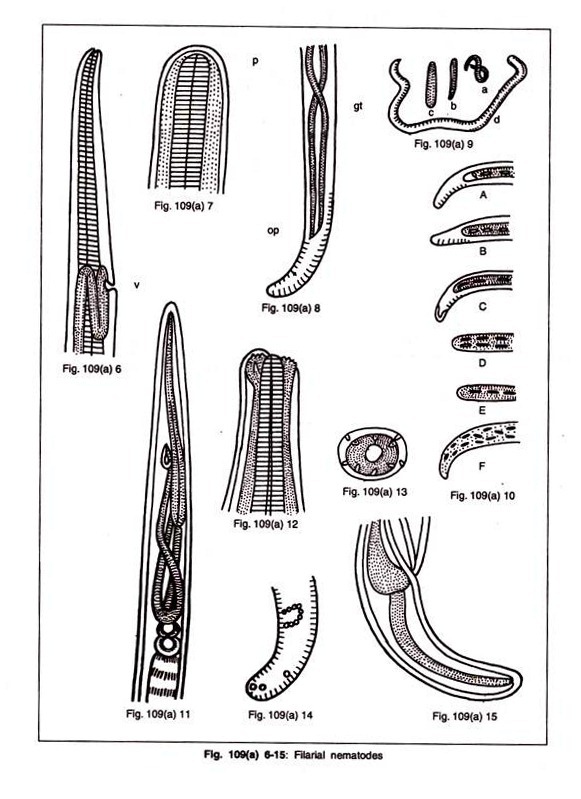ADVERTISEMENTS:
A virus is a pathogenic agent, a infections particle, consisting of a core of nucleic acid (DNA or RNA) enclosed in a protein shell. Viruses are, in general, much smaller than bacteria and have a much smaller genome. But their genetic material is of many varieties, unknown in cellular organisms. Some of these are discussed here.
Bacteriophage φX174 which attacks E. coli has a single-stranded circular DNA genome consisting of 5,386 nucleotides coding altogether 11 genes. Some of the genetic messages are overlapping which means that parts of DNA segments are common to two different genes.
Another bacteriophage M13 also capable of infecting E. coli has a similar genome as that of φX174. But the phage has a filamentous structure and does not cause lysis of infected cells, as φX174 does.
ADVERTISEMENTS:
Bacteriophages MS2 and Qβ are icosahedral lytic phages of E. coli and their genomes are small single-stranded RNA molecules. The genomes are 36,000 nucleotide long and encode only 3 viral genes.
In contrast to the small phages, the T-series bacteriophages which also infect E. coli causing lysis have much larger genomes consisting of linear ds-DNA molecules. The T-even phages, like T2, T4, T6 etc. have genomes of about 166,000 base pairs measuring about 55 μm in length. This DNA molecule has to be packaged into the phage-head measuring only 0.06 x 0.09 μm which necessitates an elaborate folding of the DNA molecule into a compact structure.
A special feature of the DNA of these phages is that it contains hydroxymethyl cytosine in place of cytosine. The phage T7 is a representative of T-odd series. It has a linear ds-DNA genome containing 39,936 base pairs which code for more than 55 genes. The genes are arranged on the T7-chromosome in an order according to their function and sequence of expression in the life cycle of the lytic phage.
The λ-phage of E. coli is a DNA-virus which has a linear ds-DNA consisting of 48,514 base pairs. After entry into the host cell, the linear molecule circularizes with the help of a segment of 12 unpaired bases at the 5′-ends of each strand. These ends of the DNA molecule of λ-phage are complementary to each other and during circularization they form base pairs. The free ends are ligated to form a covalently closed circular DNA.
ADVERTISEMENTS:
These single-stranded extensions of the linear 1-DNA are called cohesive ends or cohesive site (cos) (Fig. 9.12):
The plant and animal viruses too have genetical material which vary widely in nature, form and size. The genome may be single-stranded RNA, typical examples being influenza and tobacco mosaic viruses. Again, the ss-RNA of the virus can either be used directly as m- RNA when it is designated (+)RNA, or the viral ss-RNA can act as a template for m-RNA synthesis.
In this case, the viral RNA is called (-)RNA. The enzyme which copies (-)RNA into another RNA (m-RNA) is RNA-dependent RNA polymerase. Some RNA viruses, like the retrovirus (HIV or Rous- Sarcoma virus) have two identical RNA molecules in virions.
During replication in host a DNA intermediate is synthesized with the help of a virion-borne enzyme, reverse transcriptase which copies the base-sequences of RNA into DNA. Thus, in this case the flow of genetic information is in the reverse direction. Normally, information coded in DNA base sequence is copied into RNA in the process of transcription.
The ds-RNA viruses have always a segmented genome. Thus, the Reoviruses have 10 segments, all of which are packaged into individual virions (isocapsidic virions). Some of the ss-RNA viruses, like influenza virus have also segmented genome; each segment is different and codes for a different polypeptide.
The alfalfa mosaic virus (a ss-RNA virus) has also four non-identical segments, but each segment is packaged into a separate virion (heterocapsidic virion). Infection of the host requites the presence of all the four-types of virions.
The ss-DNA viruses, like simian virus 40 (SV40) have a circular DNA containing 5,200 bases. The DNA of SV40 codes for 6 proteins. The infected cells contain the viral DNA associated with cellular histones to form beaded structures similar to the eukaryotic nucleosomes.
SV40 DNA replicates in the nucleus of the infected cells with the help of a host DNA polymerase to form long concatemers of viral DNA. These concatemers are opened into mono-melic viral DNA and these are then packaged into individual virions.
ADVERTISEMENTS:
Large DNA viruses, like Adenovirus have double-stranded linear DNA with 35,000-36,000 base pairs. Both 3′ and 5′ ends of each strand contain 103 to 162 inverted repeated sequences which are complementary to those of the other strand. Another interesting feature of adenovirus DNA is the presence of a covalently linked 55 kilo-Dalton protein at the 5′-end of each strand. This protein can cause circularization of the ds-DNA in vitro. (Fig. 9.13).


